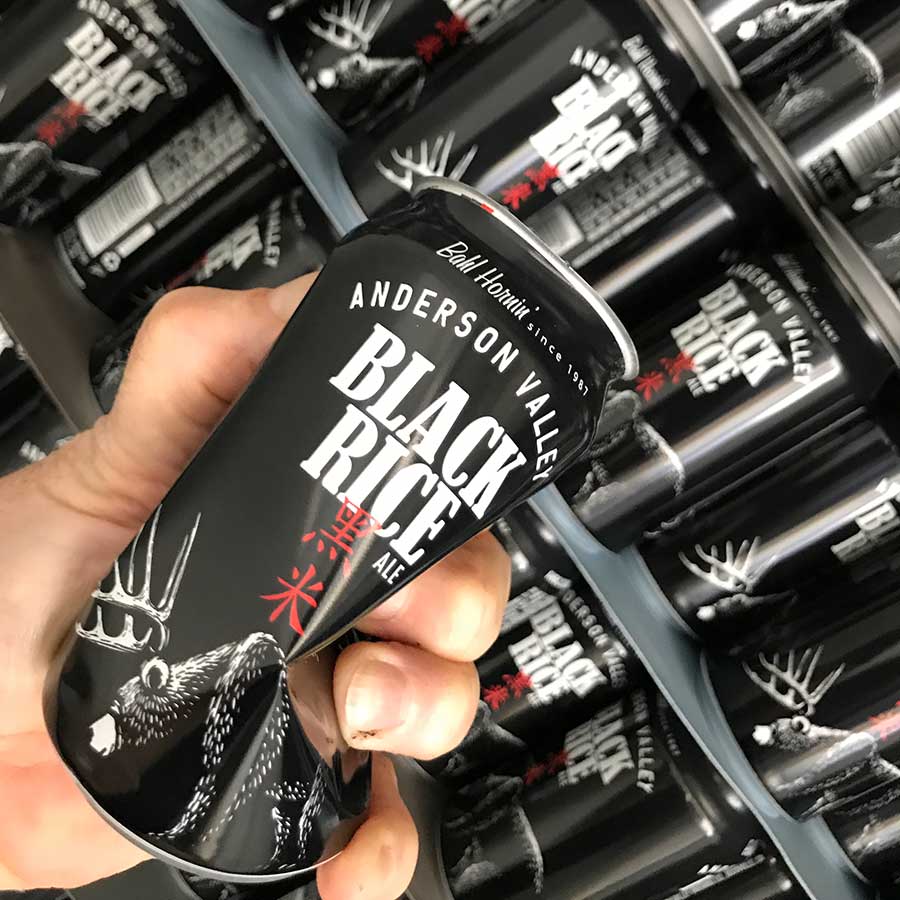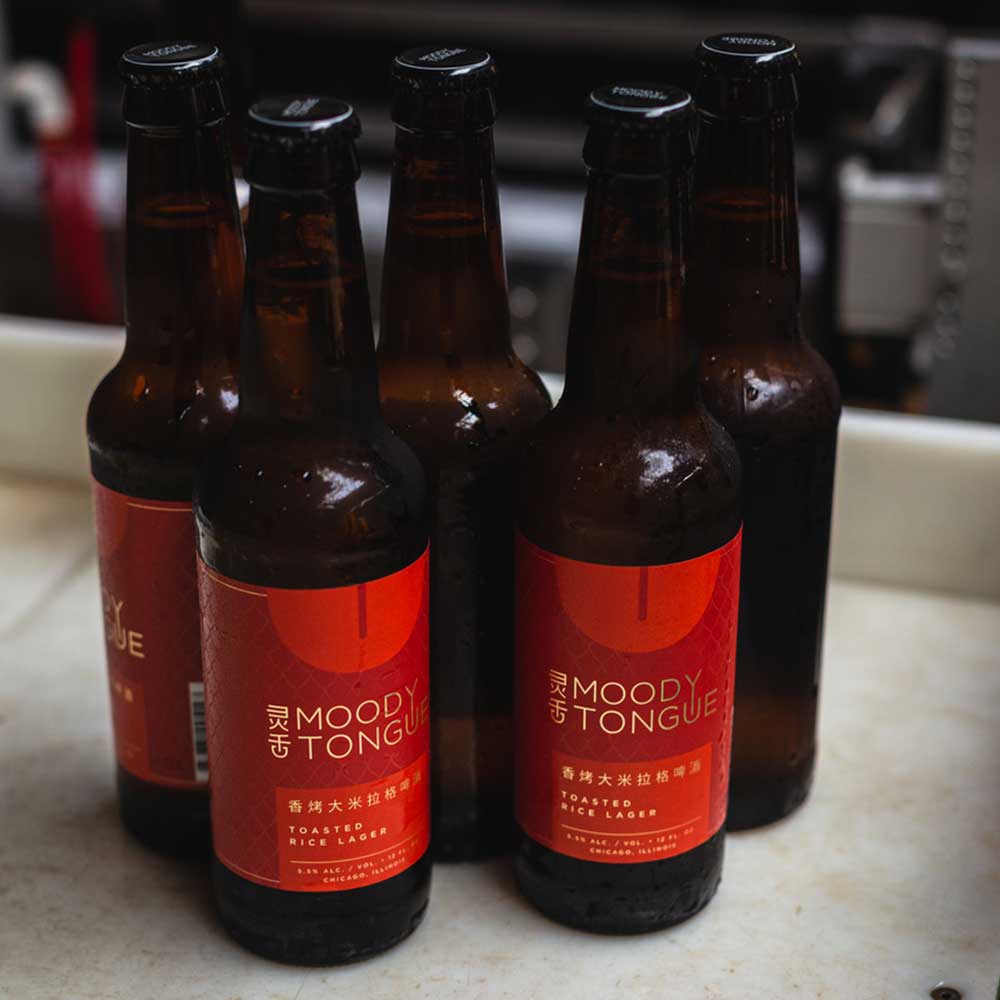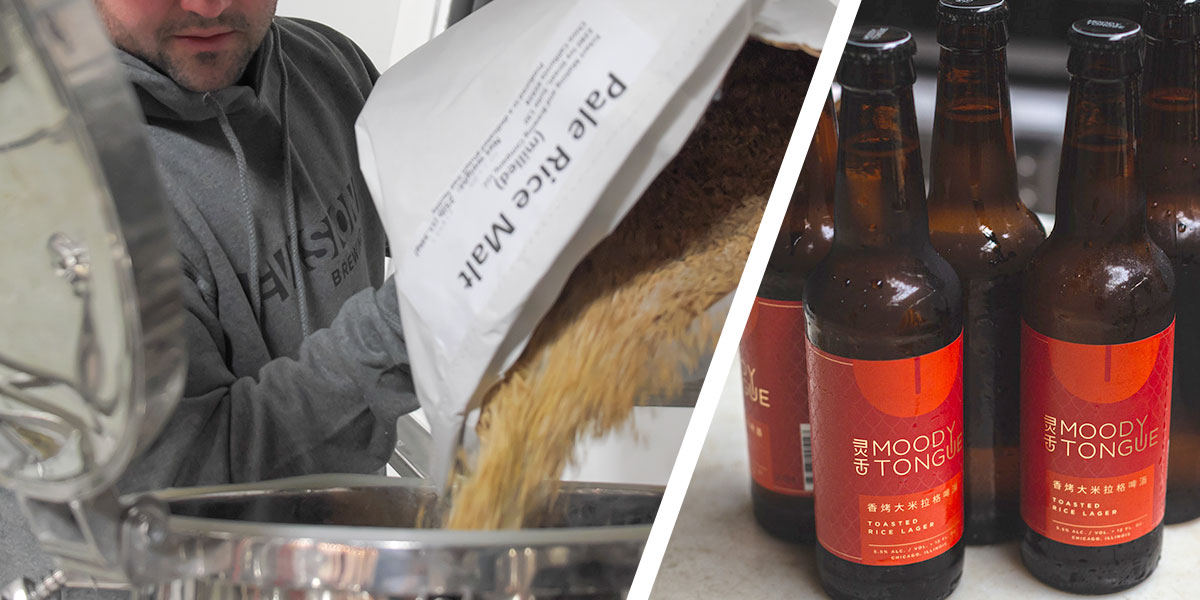There was a time when adjuncts in beer were considered taboo. Adjuncts—anything included in beer beyond the traditional four ingredients of malt, hops, water and yeast—were snubbed by many beer lovers. As a result, brewers avoided mentioning them as ingredients.
The rise of craft beer has changed all that. Today, adjuncts are celebrated.
As an adjunct, rice has long been used in mass-produced beers to increase the alcohol level while maintaining a light body. Now rice is taking top billing as craft brewers are recognizing all that it can offer.
Rice as a Brewing Grain
There are many rice options to use when brewing beer nowadays, including whole rice, syrup and flakes. Craft brewers are using the ingredients in three different ways: to help in the brewing process itself, to serve as a fermentable source of sugar and to add flavor.
“Rice is an awesome grain that’s versatile and can offer a huge influence of flavors in beer,” says Ben Acord, head brewer at Evasion Brewing in McMinnville, Oregon. Evasion is a gluten-free brewery that uses rice in all but two of its beers.
Acord started off using rice hulls to help in the mash, which is the mixture of malt or adjuncts and hot water that starts the brewing process. Rice hulls, also known as husks, are the hard outer coating of the grain. Acord used the hulls to create an effective filtering bed so the mash doesn’t get stuck.
“A lot of breweries will add rice hulls to aid the process,” says Acord.
The challenge is getting the right amount of hulls. Too many and they bind together and clog grain handling systems. Not enough and you don’t have an effective filter bed.
(More: Denizens Goes ‘Bock to the Future’ to Brew Recipe Found in Smithsonian Archives)
Now Acord uses malted rice which has the grain and the hull intact. In addition to the hulls, it has the added benefit of available sugar from the malt.
He cites the best advice he received when he was learning how to brew: “Know your malts. Make the best base beer you can with the malts you have and whatever hops you put in it will only make that beer better.” So that’s what he does. As an example, Evasion’s IPAs use three different kinds of rice malt in each.
Acord and many others who make gluten-free beer say products that have come onto the market over the last 15 years—like Eckert Malting and Brewing’s line of rice malts, Briess Malt & Ingredients Company’s rice syrup and BSG CraftBrewing’s flaked rice—are game changers for brewing. The ingredients can replace malt as the sugar source and add flavor.
Acord references Evasion’s Blonde Ale as the brewery’s best example of how rice influences flavor.
“The Blonde Ale is rice and millet and Saaz hops only,” he says. “The rice malts really lend themselves to crackery biscuit flavors that meld nicely with the Saaz hops.”
Black Rice’s ‘Unexpected’ Umami Quality

Rice isn’t just for gluten-free craft beers; it’s incorporated for flavor in traditional brewing as well. Anderson Valley Brewing Company in Boonville, California, currently makes one rice beer in its portfolio: Black Rice Ale. Brewmaster Fal Allen tried black rice for the first time in 2018 and found its dark and savory notes a delightful surprise.
“It had an umami quality I hadn’t expected,” he says. “The flavors were nutty, smooth and delicious, and I immediately started thinking about how I could incorporate it into a beer.”
First Allen cooked with black rice to learn more about it. Then he conducted some brewing experiments. He started to make Anderson Valley’s Black Rice Ale in 2018 and it went into cans in fall 2019.
(Recipe: IPA Risotto)
In addition to the unusual flavors, the black rice provides a dark inky color to a light hoppy ale.
“It has the body of a pilsner and the flavors of a lighter German dark lager,” he says. “It’s an unusual combination.”
Because he uses the rice for flavor rather than as a fermentable, the brewing process isn’t much different than the traditional approach. Instead, Allen’s challenge was finding a supplier.
“Black rice comes from China and is not a common type of rice,” he says. “It was once called ‘forbidden rice’ in China and was originally allowed to be consumed only by the royalty.”
Similar to Evasion, Anderson Valley uses rice hulls to create a filter bed while rinsing sugar from the grains for the Black Rice Ale, as well as most of the brewery’s higher gravity beers and those that contain more than 40 percent wheat.
Moody Tongue’s Chef-Brewmaster Pays Homage to Chinese Culture
Another new rice beer release is the Toasted Rice Lager from Moody Tongue in Chicago. The lager was originally a 2018 ceremonious release in China during the Chinese New Year and later offered as a limited release at the brewery’s tasting room. As of fall 2019, the beer is available in draft and bottles throughout the United States.

Jared Rouben, Moody Tongue’s president and brewmaster, and a Culinary Institute of America graduate, brings his chef’s mindset to the brewing process. He created the Toasted Rice Lager to accompany and as a homage to Chinese food—his favorite cuisine.
During his travels throughout China, Rouben learned to love the flavors, tastes and aromas of the different regions. He wanted to create a beer that offered balance and didn’t overshadow the food. By using rice, he could elevate an ingredient that’s celebrated throughout Chinese cuisine and keep the beer light and refreshing.
Toasting the rice creates nutty aromatics.
(More: Two Ancient American Beers Light a New Path at Dos Luces Brewery)
“Light lagers aren’t easy,” says Rouben. “Your beer has to be incredibly right or it’s wrong.”
He uses rice in the mash and doesn’t encounter any brewing challenges.
“We do use rice in some of our other beers, but we don’t speak to them as rice beers because they’re not part of the aromatics,” says Rouben.
All three brewers use whole grains for their beers to maintain the taste of the rice, which, along with the other challenges, are more expensive than other rice forms. They all agree it’s worth it.
“Using the whole grain has a more traditional taste to me,” says Acord. “But there are a lot of great beers using rice flakes and syrups.”
CraftBeer.com is fully dedicated to small and independent U.S. breweries. We are published by the Brewers Association, the not-for-profit trade group dedicated to promoting and protecting America’s small and independent craft brewers. Stories and opinions shared on CraftBeer.com do not imply endorsement by or positions taken by the Brewers Association or its members.


Share Post